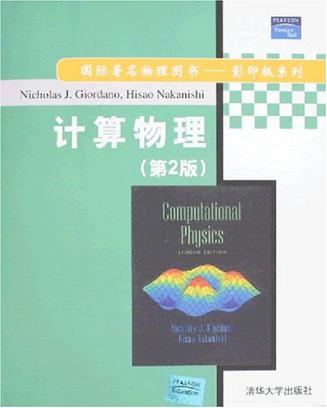章节目录
preface about the authors 1 a first numerical problem 1.1 radioactive decay 1.2 a numerical approach 1.3 design and construction of a working program:codes and pse docodes 1.4 testing your program 1.5 numerical considerations 1.6 programming guidelines and philosophy 2 realistic projectile motion 2.1 bicycle racing:the effect of air resistance 2.2 projectile motion:the trajectory of a cannon shell 2.3 baseball:motion of a batted ball 2.4 throwing a baseball:the effects of spin 2.5 golf 3 oscillatory motion and chaos 3.1 simple harmonic motion 3.2 making the pendulum more interesting:adding dissipation, nonlinearity, and a driving force 3.3 chaos in the driven nonlinear pendulum 3.4 routes to chaos:period doubling . 3.5 the logistic map:why the period doubles 3.6 the lorenz model 3.7 the billiard problem 3.8 behavior in the frequency domain:chaos and noise 4 the solar system 4.1 kepler's laws 4.2 the inverse-square law and the stability of planetary orbits 4.3 precession of the perihelion of mercury 4.4 the three-body problem and the effect of jupiter on earth 4.5 resonances in the solar system:kirkwood gaps and planetary rings 4.6 chaotic tumbling of hyperion 5 potentials and fields 5.1 electric potentials and fields:laplace's equation 5.2 potentials and fields near electric charges 5.3 magnetic field produced by a current 5.4 magnetic field of a solenoid:inside and out 6 waves 6.1 waves:the ideal case 6.2 frequency spectrum of waves on a string 6.3 motion of a(somewhat)realistic string 6.4 waves on a string(again):spectral methods 7 random systems 7.1 why perform simulations of random processes? 7.2 random walks 7.3 self-avoiding walks 7.4 random walks and diffusion 7.5 diffusion, entropy, and the arrow of time 7.6 cluster growth models 7.7 fractal dimensionalities of curves 7.8 percolation 7.9 diffusion on fractals 8 statistical mechanics, phase transitions, and the ising model 8.1 the ising model and statistical mechanics 8.2 mean field theory 8.3 the monte carlo method 8.4 the ising model and second-order phase transitions 8.5 first-order phase transitions 8.6 scaling 9 molecular dynamics 9.1 introduction to the method:properties of a dilute gas 9.2 the melting transition 9.3 equipartition and the fermi-pasta-ulam problem 10 quantum mechanics 10.1 time-independent schrsdinger equation:some preliminaries 10.2 one dimension:shooting and matching methods 10.3 a matrix approach 10.4 a variational approach 10.5 time-dependent schr6dinger equation:direct solutions 10.6 time-dependent schr6dinger equation in two dimensions 10.7 spectral methods 11 vibrations,waves,and the physics of musical instruments 12 interdisciplinary topics appendices a ordinary differential equations with initial values b root finding and optimization c the fourier transform d fitting data to a function e numerical integration f generation of random numbers g statistical tests of hypotheses h solving linear systems index
内容简介
《计算物理(第2版)》是计算物理领域的一本优秀教材。它紧扣一些非常基本但难以解析求解的物理问题逐步展开,围绕各个物理学专题介绍了物理学研究中各种基本的计算机数值模拟方法,深入浅出地讨论其理论基础和实际应用,着重于解决实际物理问题的基本数值方法。这样可以使读者通过学习,对物理学中应用的主要计算技术有一个全面的了解,从而具有利用计算机进行数值计算解决复杂体系物理问题的能力。
下载说明
1、计算物理是作者纳卡尼什乔达诺创作的原创作品,下载链接均为网友上传的网盘链接!
2、相识电子书提供优质免费的txt、pdf等下载链接,所有电子书均为完整版!

